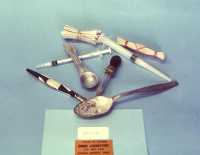MedicalResearch.com Interview with:
Ayesha Lavell MD
Universiteit Amsterdam, Department of Internal Medicine,
Amsterdam Institute for Infection and Immunity
Amsterdam, the Netherlands
MedicalResearch.com: What is the background for this study?
Response: Nose picking is so common in the overall population (91% in a survey study in the US, performed in 1995), maybe people find it hard to refrain from such a common behavior. We were really curious whether this particular behavior would be more prone to infection spread, as it entails literally putting a potentially contaminate finger against the nasal mucosa. Also, previous research has shown us that nose picking is associated with nasal carriage of S. Aureus bacteria and volunteers have shown to be able to infect themselves with a common cold virus (Rhinovirus) by rubbing the virus inside their nose (laboratory based research in the early seventies). Therefore, it is surprising (given the amount of literature on SARS-CoV-2) that the relationship between nose picking and COVID-19 has not been studied before. And especially since health care workers are at increased risk of contracting SARS-CoV-2, we wanted to know more about common behavioral features that may contribute to this risk.
(more…)



